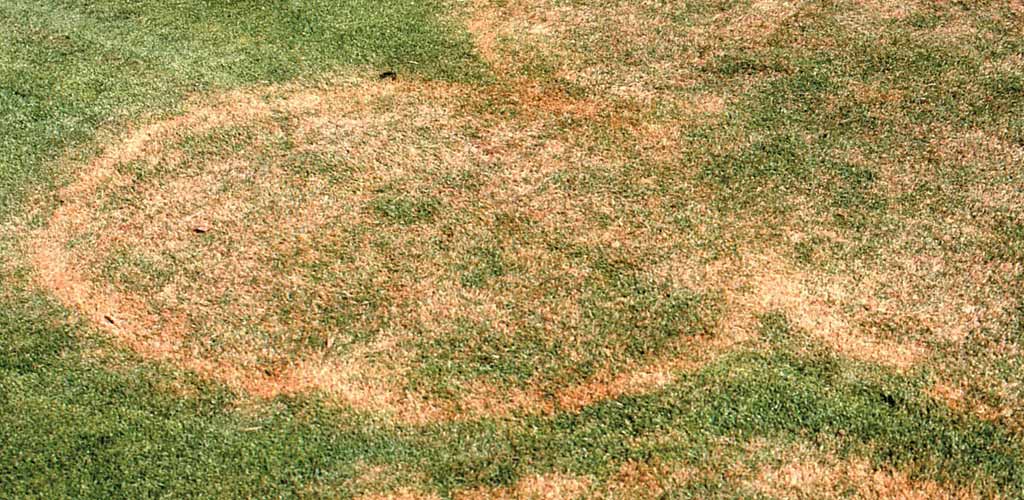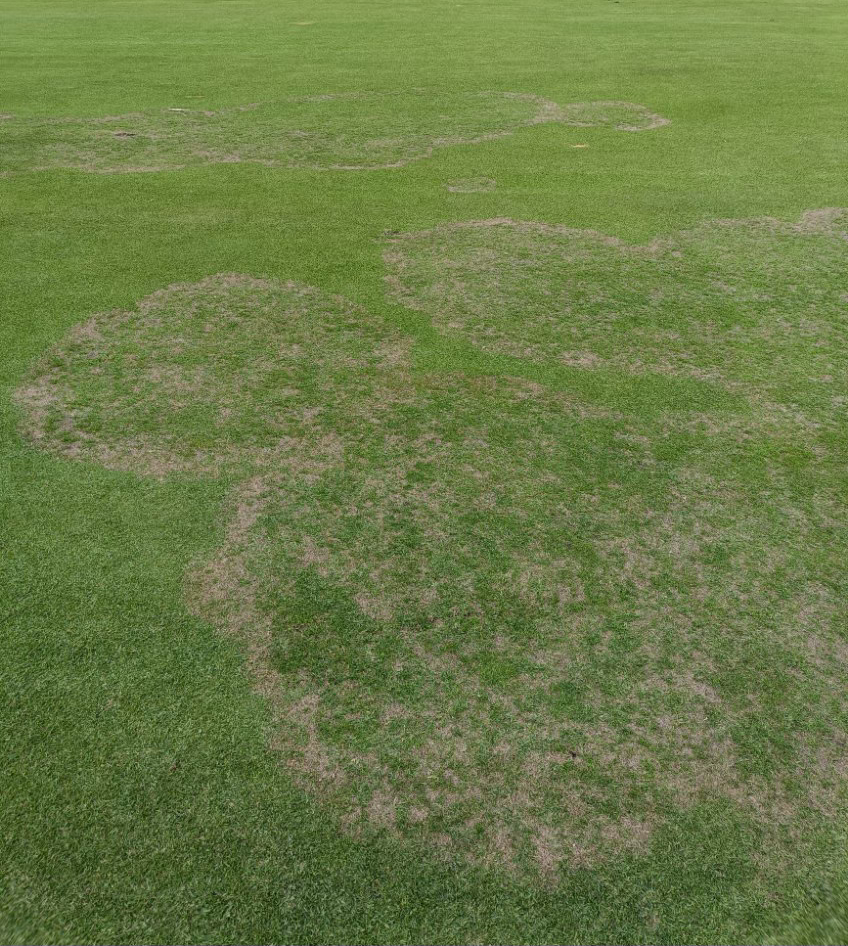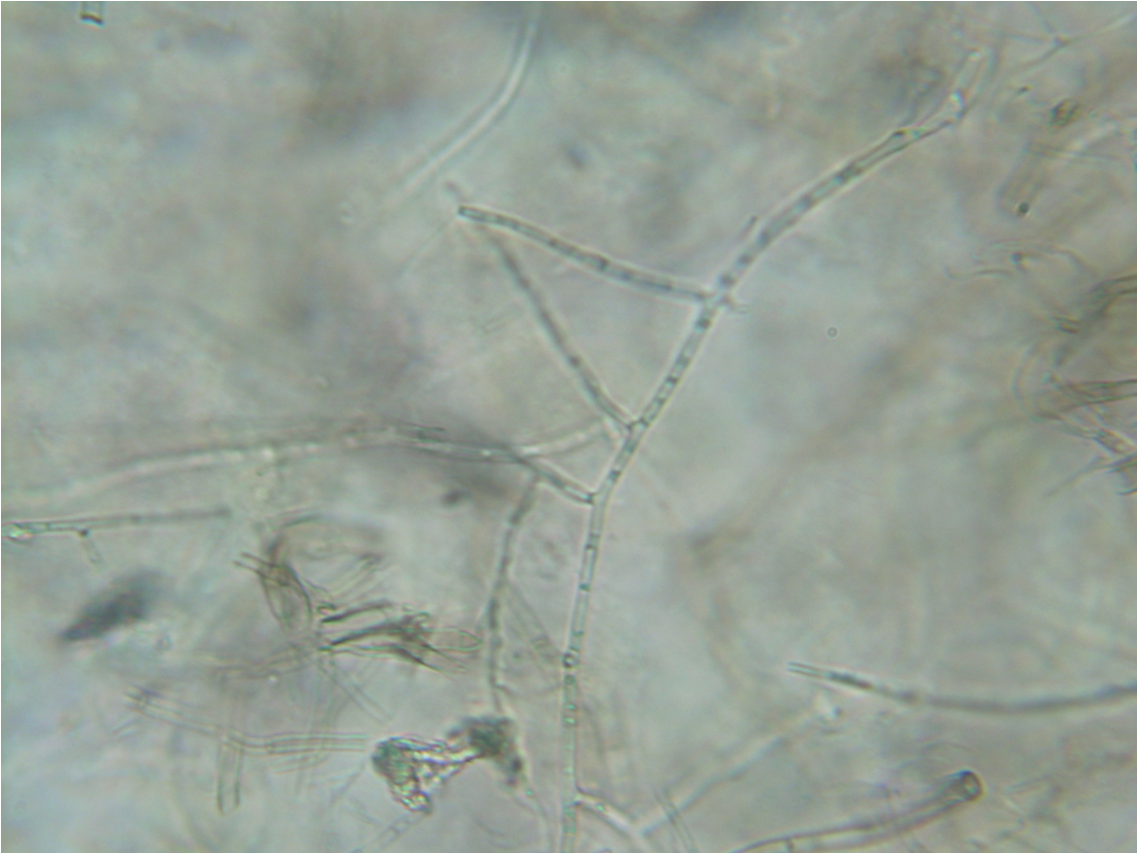Large Patch
Causal Agent
Rhizoctonia solani – strain AG 2-2LP
What is Large Patch?
Internationally Large Patch is a fungal disease caused by a specific strain of Rhizoctonia solani. It attacks warm season turf in autumn and spring just as it is going into, or emerging from, dormancy.
While both Large Patch and Brown Patch are caused by the same core pathogen species Rhizoctonia solani, the different strain behind Large Patch is recognised as a discrete disease in its own right.
What are the symptoms of Large Patch?
General symptoms of Large Patch include:
- Small, reddish-brown or black lesions that develop into rings and patches ranging in diameter from 30cm to over 6 metres
- These patches are reddish-brown to yellow with bronze-coloured edges
- Patches have an expanding look to their edge and often look like multiple patches converging
- Damaged leaves easily detach from stems when gently tugged



What pathogen causes Large Patch?
The Rhizoctonia solani strain AG 2-2LP pathogen is the causal agent shown to be behind large patch in many parts of the world. It can be found in soil, thatch and root zone tissues at most times throughout the year waiting for supportive environmental conditions to occur. Local testing in Australia has suggested an alternate strain may be involved here – but this remains unresolved.
When does Large Patch occur?
More commonly Large Patch will develop in autumn and can cause significant damage over a longer period even interfering with spring green up many months later if left unchecked.
The disease becomes most apparent during cool, wet weather, especially when soil temperatures dip below 21°C and humidity levels are high.
What turfgrasses are especially susceptible to Large Patch?
A range of warm season turfgrasses such as Couchgrass, Zoysia and Kikuyu are particularly susceptible to Large Patch. Here in Australia we have seen aggressive activity at times on Kikuyu in late summer into autumn.
What can I do to manage Large Patch?
Prevention is key, as Large Patch recurs yearly under the right conditions and can be challenging to manage once established.
To minimise the risk of Large Patch, undertake the following cultural practices:
- Avoid applying excessive nitrogen before humid periods and minimise nitrogen applications in late summer to autumn
- Avoid overwatering and improve soil drainage whenever possible
- Reduce thatch buildup
- Remove morning dew
- Increase the height of cut
In areas prone to Large Patch, timely preventative fungicide applications are essential.








